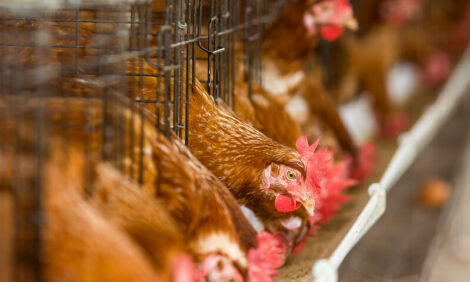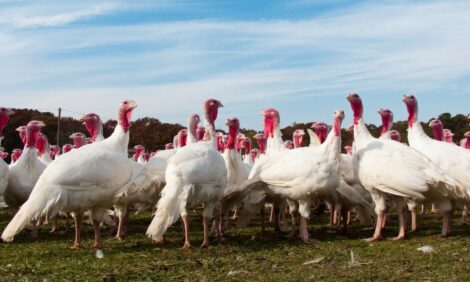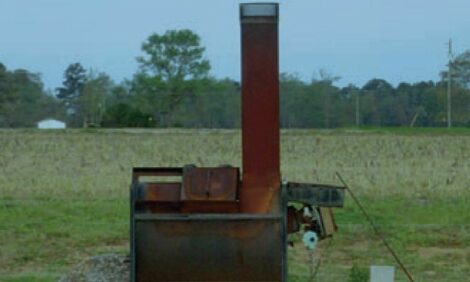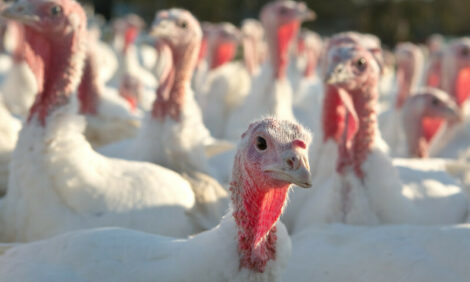



US Poultry Industry Manual - Feed and water
Learn more about feed and water during a disease responsePart of Series:
< Previous Article in Series Next Article in Series >
Editor's Note: The following content is an excerpt from Poultry Industry Manual: The Foreign Animal Disease Preparedness and Response Plan (FAD PReP)/National Animal Health Emergency Management System (NAHEMS) Guidelines which is designed to provide a framework for dealing with an animal health emergency in the United States. Additional content from the manual will be provided as an article series.
Feed
During a disease response, the on-farm inventory of feed must be promptly ascertained along with the rate at which it will be depleted in order to determine when more feed will be needed. Transportation routes may be disrupted, so plans for alternate feed sources and delivery routes should be made before the situation arises. Depending on the feeding system in place, manual feeding may be required. Records should be maintained including the date, origin, and amount of the feed delivery. Ration formulations must be followed to avoid disruption of egg production. Feeder space should be sufficient to allow all birds to eat at the same time.
Water
Chicks, pullets, and hens should have continuous access to clean drinking water. The manufacturer’s guidelines for the number and placement of drinkers should be consulted, but general recommendations for watering space for layers are as follows:
Table 3. General Recommendations for Watering Space for Layers |
||
Age |
Minimum linear trough space/bird |
Maximum number of birds per cup or nipple |
0-6 weeks |
0.6 minutes |
20 |
6-18 weeks |
0.8 minutes |
15 |
older than 18 weeks |
1.0 minutes |
12 |
Perimeter space needed for round waterers can be determined by multiplying linear trough space by 0.8 inches. Water pressure must be regulated carefully with automatic devices and watering cups. Manufacturer recommendations should be used initially and adjusted if necessary to obtain optimal results. Automatic watering devices may require frequent inspection to avoid malfunctions. Inspectors should test the drinking systems in at least 4 cages to be sure that they are functioning properly.
Ventilation
Poultry houses should be designed to provide a continuous flow of fresh air for every bird. Ventilation systems usually consist of a series of fans and/or louvered openings. Fans and louvers must both operate properly to allow adequate air flow. Sufficient ventilation to minimize levels of carbon monoxide, ammonia, hydrogen sulfide, and dust is critically important. Ammonia concentration to which chickens are exposed should ideally be less than 10 ppm and should not exceed 25 ppm. In pullet or layer houses that require mechanized ventilation, stand-by generators with alarm systems must be provided and tested regularly. Such systems should be sufficient to supply emergency power for lighting, watering, ventilation, and feeding.
Light
Lights should be provided to allow effective inspection of the feed delivery and water systems and the physical condition of layers in each cage. Inspection of the chickens should be conducted daily. Light intensity should be 0.5 to 1.0 foot candle for all birds at feeding levels during production. Specialized equipment is needed to measure the intensity of light.
Environmental Temperature
Environmental conditions within the house should allow the birds to maintain their normal body temperature without difficulty. Chicks cannot regulate their body temperature, so providing supplemental heat in brooder houses is critical. Enclosed and environmentally controlled layer houses are insulated and body heat from the chickens provides heat for the house.
Reference: "USDA APHIS | FAD Prep Industry Manuals". Aphis.Usda.Gov. 2013. https://www.aphis.usda.gov/aph...
The manual was produced by the Center for Food Security and Public Health, Iowa State University of Science and Technology, College of Veterinary Medicine, in collaboration with the USDA Animal and Plant Health Inspection Service through a cooperative agreement.















